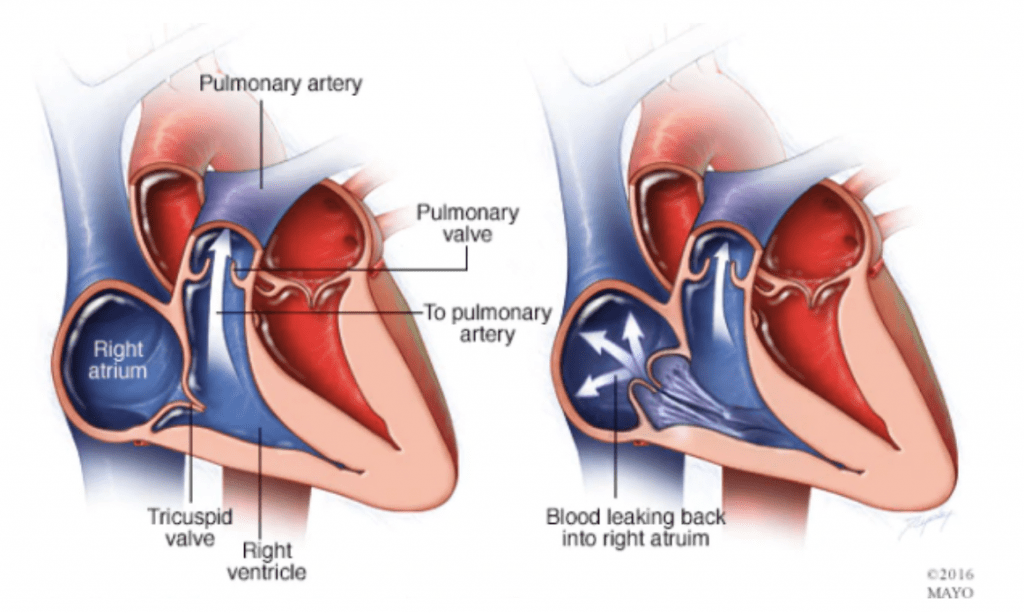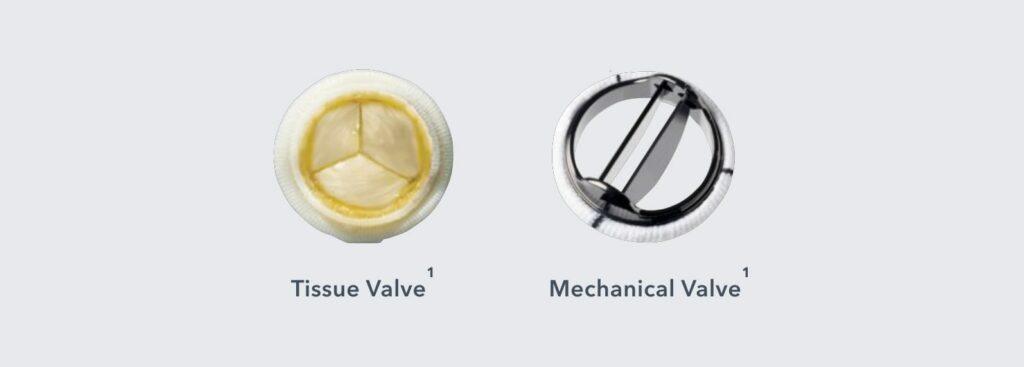About Tricuspid Regurgitation
The Tricuspid Valve is positioned between the Right Atrium and the Right Ventricle and is responsible for opening to allow oxygenated blood to flow from the right atrium to the right ventricle.1
Tricuspid regurgitation refers to an abnormal leaking of blood across the tricuspid valve. This condition occurs due to insufficient closure of the tricuspid valve, this causes blood to be pushed back into the right atrium when the ventricle contracts and can lead to increased pressure in the atrium.2

Incidence and prevalence of Tricuspid Regurgitation
The international incidence of tricuspid regurgitation is estimated to be < 1% with an equal incidence between men and women.
What are the causes of Tricuspid Regurgitation?
Tricuspid regurgitation is generally classified to have either a primary or secondary cause of the condition.
Primary causes:
- The lesion may have been caused due to a structural abnormality of the valve or the tendons that support the valve.
- A congenital heart defect or a condition that is known as Epstein’s anomaly which is when the Tricuspid Valve can sit abnormally lower in the right ventricle.
Secondary causes:
- The lesion has been caused by dilatation (enlargement) of the right ventricle or other causes of heart failure,
- Infection of the lining of the heart also known as infective endocarditis,
- Marfan Syndrom which is a genetic connective tissue disorder,
- Rheumatic fever,
- Pacemaker leads that can inhibit the closing of the tricuspid valve,
- Trauma, or
- Some medications.3
What are the symptoms of Tricuspid Regurgitation?
For many patients, there may not be any noticeable symptoms until the condition becomes more severe. However, some patients may present with the common signs of heart failure and symptoms such as:
- Shortness of breath,
- Difficulty breathing when lying flat (orthopnoea),
- Night-time shortness of breath,
- Leg swelling,
- Swollen abdomen,
- Presence of a heart murmur, or
- Irregular heartbeat (atrial fibrillation).
Diagnosis of Tricuspid Regurgitation
Similar to many suspected valvular conditions, a formal diagnosis of Tricuspid Regurgitation is made usually after an Echocardiogram (Echo) has been performed. An echo helps in identifying the severity of tricuspid regurgitation as well as other structural heart abnormalities.
Other helpful diagnostic tests may be:
- Chest X-ray,
- Cardiac MRI,
- Blood tests,
- Electrocardiograph (ECG) which can show right bundle branch block, T wave inversion or presence of atrial fibrillation.4
Treatment of Tricuspid Regurgitation
Unless the patient is suffering from severe tricuspid regurgitation with associated severe symptoms, management of the condition may be “watchful waiting” or simple medications to manage the symptoms of the condition.
Medical Management
This may include medications such as:
- Diuretics to help manage fluid retention and prevent fluid overload that can occur in patients who may have heart failure.
- In the presence of atrial fibrillation, medication may be used to control heart rates and rhythm such as beta-blockers.
Surgical Treatment of Tricuspid Regurgitation
In the presence of severe tricuspid regurgitation, a Cardiology team may decide the diseased valve needs to be replaced.
There are a number of potential procedures that may be suitable:
- Heart surgery may utilised an open-heart approach or a minimally invasive technique. During this surgery, the diseased valve is replaced with a mechanical or bioprosthetic valve. Mechanical valves may require lifelong blood thinners to stop blood clots from forming. Bioprosthetic valves, which are made from cow or pig tissue, and do not require blood thinners. The cardiac team will discuss which valve is the most suitable option for each individual patient.

- Catheter Procedures are a new technique that can repair the tricuspid valve. Similarly in a mitral valve repair, a “clip” can be used to bring the leaflets of the Tricuspid Valve together to reduce the regurgitation of blood between the right atrium and the right ventricle. It’s important to note that this procedure may not be TGA approved or commercially available at this time in Australia.
